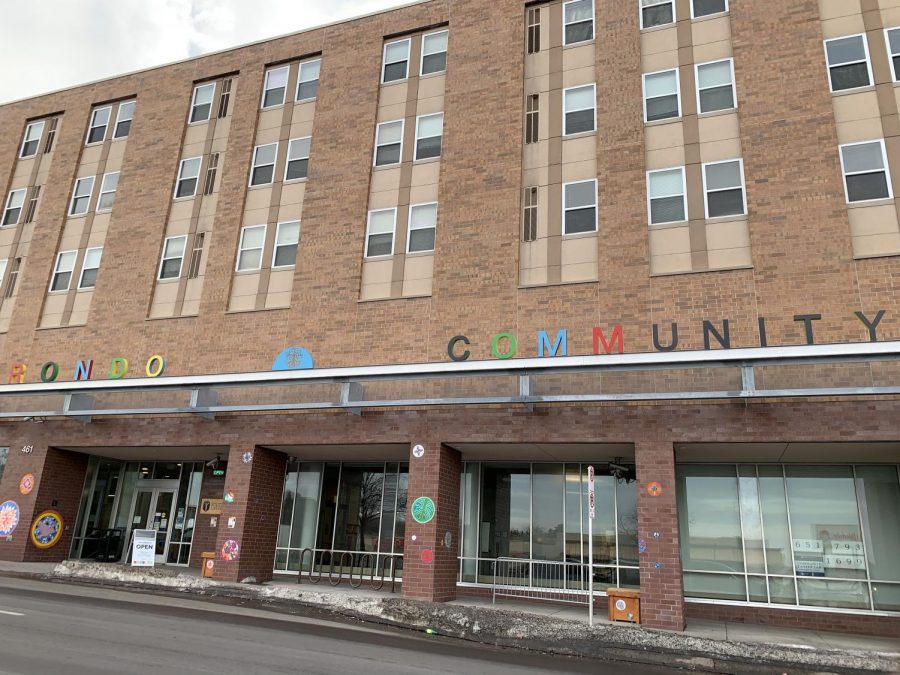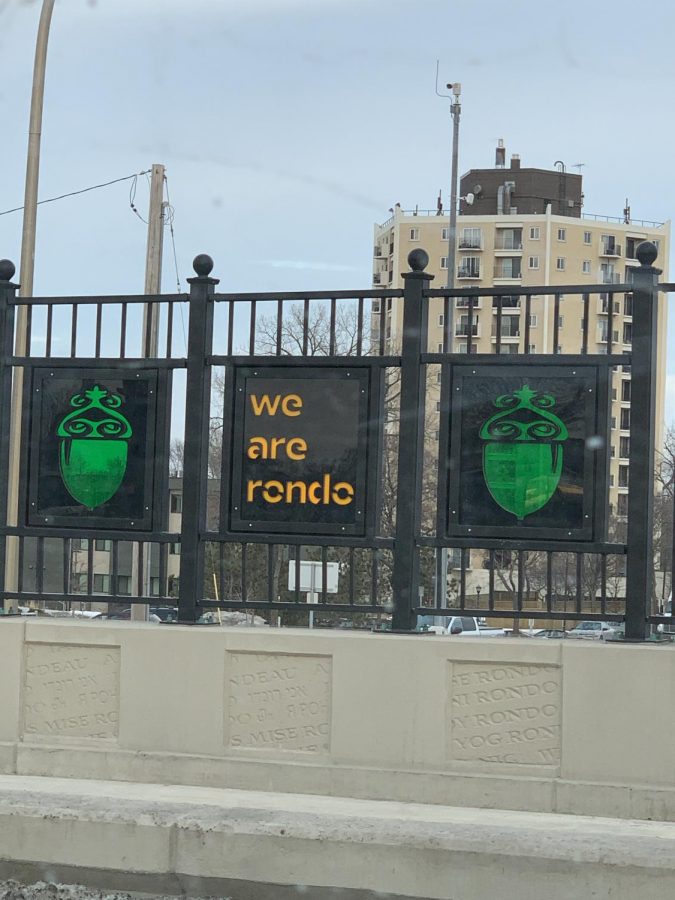Resilience of Rondo
Just a few blocks from Hamline’s campus, the Rondo neighborhood begins. The neighborhood was once known as the heart of the Twin Cities’ Black community until being largely destroyed following the creation of Interstate 94 in 2015. Still, the community has come together to heal and thrive.
Emily Lall
The Rondo neighbohood received an apology from the Minnesota Department of Transportation in 2016. Many memorabilia have been built in the community, including a commemorative plaza on Concordia Avenue.
March 4, 2021
A poem from the Rondo Oratorical entitled “Preaching Mississippi” described the Rondo neighborhood as “a place where people shared their cares, their sorrows, their shame, their faith, their hope, love, and humanity.” The poem repeatedly asks the question “what’s your glory, Rondo? Cut off, cut on, and driven upon.”
These are the words read aloud by Maya Beechum of the Bush Foundation at a Rondo healing ceremony on July 17, 2015. St. Paul’s Rondo neighborhood was known as the center of the Twin Cities’ Black community, but the neighborhood was torn apart to form what we know as Interstate 94. By the 1950s, around 85% of St. Paul’s African-American population lived in the Rondo neighborhood. Besides its large Black population, the Rondo neighborhood was very culturally diverse, with a significant immigrant population — German, Russian, Irish and Jewish residents — intertwined into the neighborhood’s overall culture. The Rondo neighborhood is located a few blocks away from Hamline University, and extends south into Summit-University Ave., and north to University Ave.
From the years of 1956 to 1968, the Rondo neighborhood was systematically demolished throughout its heart in order to make room for the first St. Paul freeway — the I-94. Over five hundred families were displaced, alongside many businesses and social locations that were lost. One out of every eight African-Americans in St. Paul lost their homes to I-94.
A 1991 KTCA documentary explored how the road had originally not gone anywhere. For a few years there was simply a large strip of road unused as it was developed. Many neighborhood protests from residents eventually convinced the highway engineers to put the highway into a sunken trench.

The Rondo neighborhood is bordered by University Avenue to the north, Selby Avenue to the south, Rice Street to the east and Lexington Avenue to the west. Despite the neighborhood’s history of disenfranchisement, the
community persists.
The thousands of state residents that lost their homes have their former houses catalogued in the State Department of Transportation’s files, the last remnants of the original neighborhood for the residents of Rondo.
Eventually, in 2016, the Minnesota Department of Transportation formally apologized for the destruction and displacement of the neighborhood. The same year, the Rondo commemorative plaza was built on Old Rondo Ave., now known as Concordia Ave.
The Rondo neighborhood has a yearly celebration called Rondo Days, a festival on the third Saturday of July each year. The festivities include live music, local food and several other community events meant to highlight the arts and culture of Rondo. To the residents, it stands as a testament to the enduring spirit of a neighborhood torn apart by systematic disenfranchisement.



